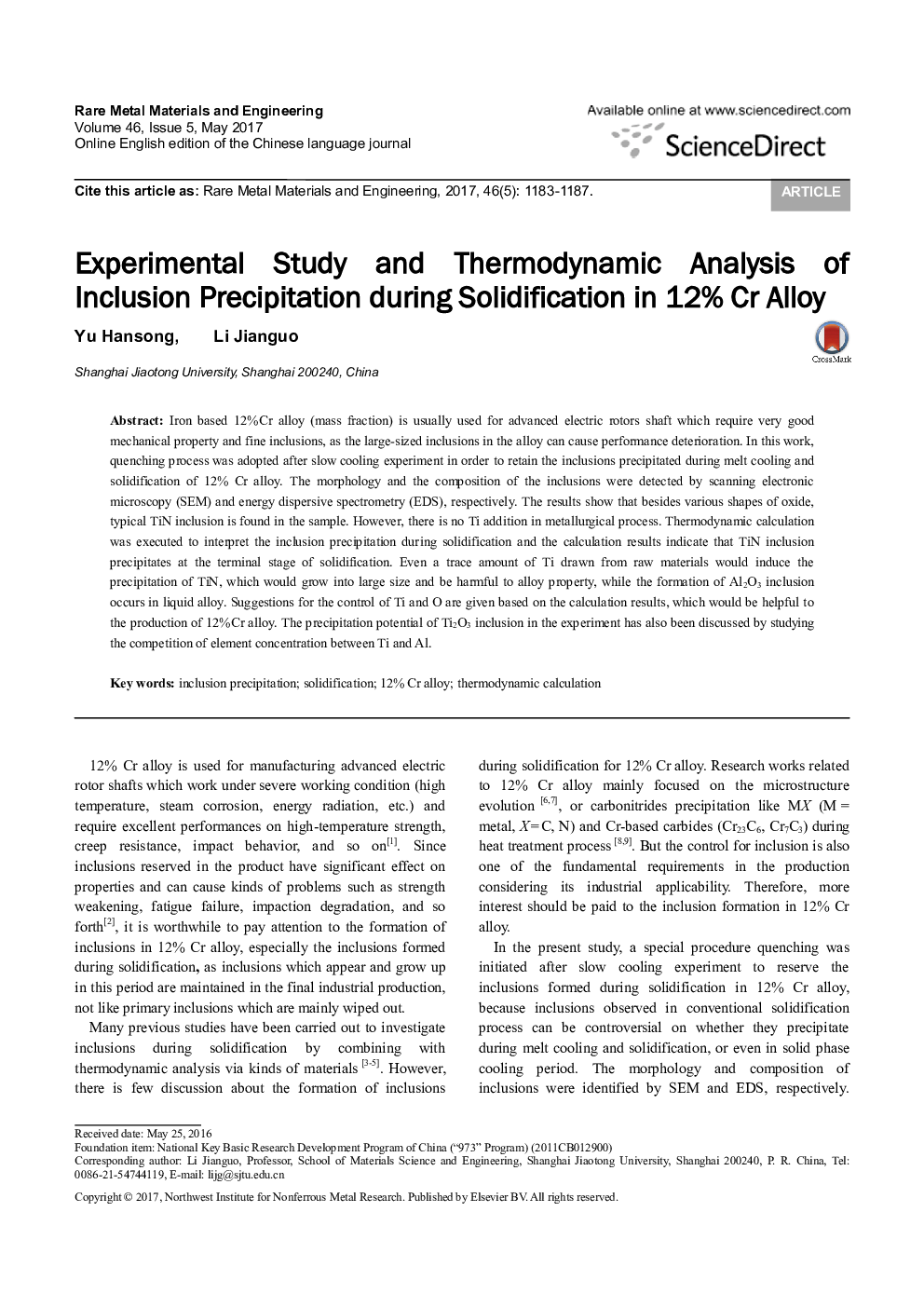| Article ID | Journal | Published Year | Pages | File Type |
|---|---|---|---|---|
| 7210375 | Rare Metal Materials and Engineering | 2017 | 5 Pages |
Abstract
Iron based 12% Cr alloy (mass fraction) is usually used for advanced electric rotors shaft which require very good mechanical property and fine inclusions, as the large-sized inclusions in the alloy can cause performance deterioration. In this work, quenching process was adopted after slow cooling experiment in order to retain the inclusions precipitated during melt cooling and solidification of 12% Cr alloy. The morphology and the composition of the inclusions were detected by scanning electronic microscopy (SEM) and energy dispersive spectrometry (EDS), respectively. The results show that besides various shapes of oxide, typical TiN inclusion is found in the sample. However, there is no Ti addition in metallurgical process. Thermodynamic calculation was executed to interpret the inclusion precipitation during solidification and the calculation results indicate that TiN inclusion precipitates at the terminal stage of solidification. Even a trace amount of Ti drawn from raw materials would induce the precipitation of TiN, which would grow into large size and be harmful to alloy property, while the formation of Al2O3 inclusion occurs in liquid alloy. Suggestions for the control of Ti and O are given based on the calculation results, which would be helpful to the production of 12% Cr alloy. The precipitation potential of Ti2O3 inclusion in the experiment has also been discussed by studying the competition of element concentration between Ti and Al.
Related Topics
Physical Sciences and Engineering
Engineering
Mechanics of Materials
Authors
Yu Hansong, Li Jianguo,
